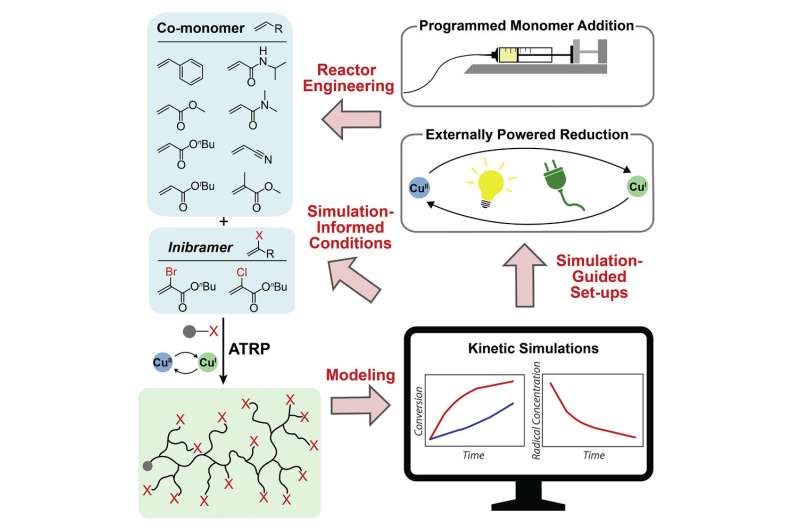Improved method to make branched polymers

Branched polymers, polymers that look like tiny tree branches, have significant potential for water filtration, the biomedical field, nanoelectronics, and other applications. Researchers have now come up with a better way for efficiently creating these unique structures.
Led by the lab of Mingjiang Zhong, assistant professor of chemical and environmental engineering and chemistry, the study is now published in Chem.
Polymers, which are made of repeat units of small molecules to form a larger molecule, have various structures. Zhong focuses on developing polymers with branches, or side chains, that bear their own branches. A polymer structure with a higher degree of branching means that it has a greater density of functionality without taking up more room.
A few years ago, Zhong developed a process for making these structures, also known as dendritic polymers. Their potential was limited, though, by the small-scale and moderate-efficiency process of synthesizing them. Now, with a combination of mechanistic experiments and computer simulations, his lab can make them more efficiently and with more control. With this process, they can be developed in an industry environment. It's a necessary step toward taking these polymers beyond fundamental research and into use for practical applications.
"We want to synthesize well-controlled branch polymers because we want to mimic some biosystems that have very precise structures," said Mengxue Cao, a graduate student in Zhong's lab and lead author of the study. "Our method can guarantee a controlled polymer length and branch number."
A big part of the work's success came from optimizing the method for converting monomers, the small molecules that make up polymers. Cao said they can now convert the monomers with three times more efficiency.
In addition to conducting lab experiments, the researchers developed kinetic simulations, in which they factored in proposed data to see "how can we make the molecule more controlled and how can we potentially lower the catalyst concentration."
Cao said that with a scalable process developed, the lab is now looking to put these unique materials to use, perhaps starting with water filtration.
"We already have a large library of monomers that we want to polymerize, which means that we can make different functional materials with branched structures, so the next step might be to put those things into real applications," she said.
More information: Mengxue Cao et al, Expanding the toolbox of controlled/living branching radical polymerization through simulation-informed reaction design, Chem (2022). DOI: 10.1016/j.chempr.2022.02.022
Journal information: Chem
Provided by Yale School of Engineering and Applied Science





















